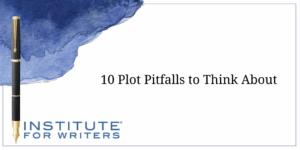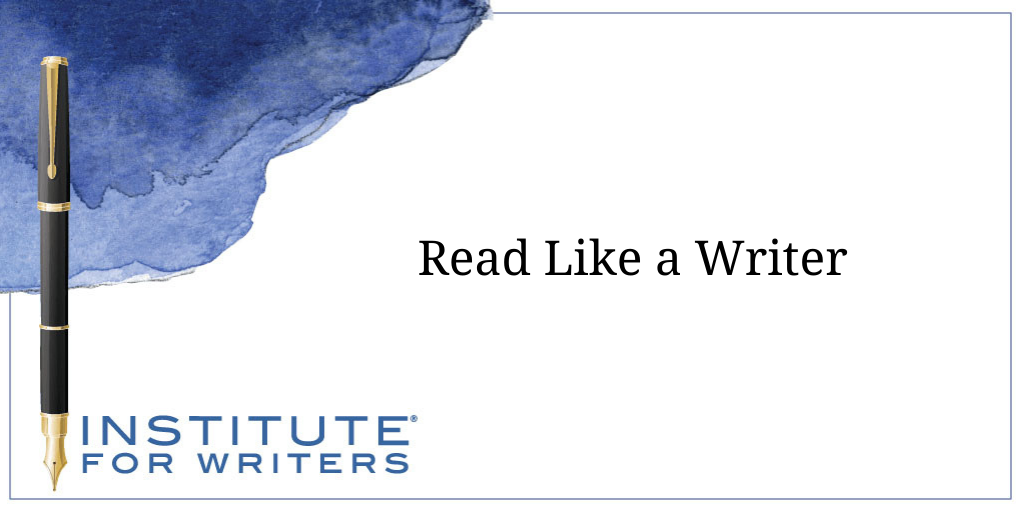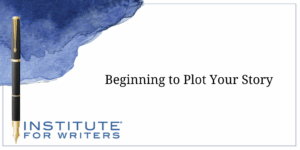
10 Plot Pitfalls to Think About
Plot can be tricky, and, as a writer, you need to be aware of what makes or breaks plot. Take a look at 10 different things to avoid in your own writing.

We teach our students how to write and get published!
View our Course Catalog >
Ah, a bright shiny new year. A new start is a perfect time to reflect on our goals for the future. If you’re goal is to become a better writer and create submission-ready manuscripts, you’re in luck, because you can enroll in a writing course at the Institute for Writers today! To give you a sneak peek inside our IFW courses, today’s post is one of our Pointers from the Pros.
Pointers from the Pros are 4-5 page articles that demonstrate a specific point about the craft of writing. If you’re stuck on a certain element in your writing (or writing assignment), as a student, you can download a related article to help you breakthrough that particular block. Today we’ll learn to read like a writer in this Pointer from the Pros from IFW instructor Kris Franklin. You’ll never look at your favorite book the same way again. Enjoy!
“I have a question.”
The bookstore clerk’s name was Joan. She was arranging copies of my novel, Relentless, on a table alongside a mini-podium. Read an excerpt, answer some questions—if anyone asked them—and sign some books. That was the plan.
“On page . . . .” She flipped open one of the books. “. . . 44, your bad guy—”
“Eugene Cleese,” I said.
“Yeah. He takes a bullet-proof vest with him when he heads off to the mountains. Then on page . . . .” She skipped to a spot she’d marked with a sticky note. “. . . 263, the good guy shoots him, but doesn’t know he has on the vest. How did you know that far ahead you’d need the vest?”
“I didn’t,” I said. “I got to that spot and saw Cleese couldn’t avoid getting shot, but the story was nowhere near over. So I went back to the front of the manuscript and added the Kevlar vest to make it rhyme later on.”
“Huh.” She looked mildly disappointed. “Tricks of the trade, I guess.”
She went back to stacking books.
I couldn’t blame her. It’s human nature. Some of us want to see past the puppet, up where the strings go, and some of us don’t.
Most writers want to see. Stephen King, in an Entertainment Weekly piece, praised a particular book by saying he read it once for pleasure, then again to see how it was done. Writers enjoy a good story, but we also look for the strings extending out of view to the puppet master—the author.
Studying how a book is put together can help us with our own writing. The problems we encounter—plot line, characterization, pace—were also faced by the author of the book we’re reading, and being aware of how he or she dealt with them can be instructive. So, read like the writer you are. The same story elements are present in nearly all novels, so take a closer look.
In a novel, hooks are often used in each new chapter, in addition to the original hook at the beginning of the story. It’s almost like each chapter is an individual short story. “Call me Ishmael,” the narrator said in beginning Moby Dick, and Melville’s opening line became one of the most famous (and shortest) hooks of all time.
Some novels use lavish descriptions of everything, right down to the last hair on a character’s goatee. Others use almost no description, leaving the details to the reader’s imagination. These choices usually depend on the importance of the details to the story line. Genre may also be a factor. A romance novel is more likely to include elaborate descriptions of settings and of the characters’ physical characteristics than a mainstream novel.
Such information is usually necessary to understanding a plot line, but it can cause the reader to start skimming, especially if it interrupts the ongoing action for too long. Some authors get this information to the reader through character dialogue. Some use dramatized flashbacks.
The backstory on Stephen James, the lead character in my novel, The High San Juan, is extensive. It covers 20 years and is essential to the events taking place, so I used three different flashbacks, interspersed throughout the book, to bring a reader gradually up to date. Note: few modern authors begin a book with backstory unless it’s quite brief. Hook your reader first, and then slip in the backstory later.
A new chapter is a natural transition, but scene shifts may also occur within a chapter. Sometimes extra spaces on the page indicate this; other times the wording itself is an indicator:
…watched her walk away in the rain.
The next morning, he tried to call her on her cell phone . . . .
Viewpoint change is a form of transition. Many writing instructors (I’m one of them) caution against “head-hopping”—jumping around among multiple points of view within the same scene. But many romance novels head-hop merrily all the way through, since romance readers usually want to know what both the hero and the heroine are thinking all the time—or even at the same time. Notice how the author handles viewpoint, and think about how it may apply to your own writing.
Notice how the author foreshadows future character action based on the character’s traits. This element also ties into motivation. In Relentless, I wanted to show my lead character’s insecurities after a terrible trauma in her past. To do this, I gave her flip and sarcastic dialogue when dealing with the male lead, as a form of self-defense, to keep him at a distance early on, instead of telling the reader she was afraid to open up to this guy.
Believable motivation is key to believable characters. My primary bad guy in The High San Juan, Joseph Ware, is a bizarre character, and I realized he might be difficult to believe, even in a genre suspense novel. So I used both backstory (including a childhood flashback) and specific segments presented in his point of view to get to his inner workings.
Are they there just for the sake of quirkiness, as quickie character sketches, or other general self-indulgence, or do they perform specific functions such as moving the plot forward or developing the character of the lead performers (or both)? In Harper Lee’s classic novel, To Kill a Mockingbird, the shadowy Boo Radley seems for much of the story to be simply folklore —something to provide humor through Jem, Scout, and Dill. But in the end, he’s pivotal to the plot, and we see Lee’s skill in planting him in our consciousness early on.
Suspense isn’t just for mystery stories. In a relationship-based mainstream story, suspense may be built around whatever motivation drives the lead character forward. In Pat Conroy’s The Prince of Tides, suspense is created by the protagonist’s search for answers about his sister’s suicide.
No fiction vehicle combines all of the aforementioned elements better than dialogue. Even the most skillfully developed plot line can be sabotaged by leaden, wooden-sounding dialogue, whereas well-written, natural-sounding dialogue brings characters to life. Try reading dialogue aloud. Does it sound natural, the way people really talk? Do the different characters sound different, like distinct individuals?
Authors known for their dialogue skills (Elmore Leonard is one example) are said to have an “ear” for dialogue (like an ear for music), but any author can improve dialogue-writing skills in the most simple way: listen to people speaking. Listen for nuances, phrasing, and speech patterns in the world around you, and remember them when you write. Make a habit of reading authors who handle dialogue skillfully.
When you read a novel for enjoyment, it’s unlikely you’ll follow a checklist—at least not consciously. Your focus will be on the book’s overall impact and your reaction to it as a whole. But your inner writer will be absorbing various elements of the author’s craft you see on the page.
Chances are, when Joan read Relentless, she gave no thought to any of these elements, either during or after. I hope she simply enjoyed the book, just as I hope you read novels for sheer enjoyment as well. But you’re also a writer, so you’re different. Read like a writer. Enjoy and learn while you’re spotting the strings.
After a lengthy teaching career, Kris Franklin began freelancing with outdoor/fitness articles and stories, often built around humor. This led to a newspaper job writing features and then to his own humor column. His published work includes short form fiction, nonfiction articles and essays, and three suspense novels set in the Colorado mountains where he lives. Kris is a writing instructor for the Institute for Writers.

Plot can be tricky, and, as a writer, you need to be aware of what makes or breaks plot. Take a look at 10 different things to avoid in your own writing.

Plot is more than just the chain of events within a story. There are so many elements to plot to consider when writing. Let’s dive into those elements.

Visiting new places is key to exploring new ideas and finding inspiration. Let’s see the places you can go this summer to spark your next story.
1000 N. West Street #1200, Wilmington, DE 19801
© 2024 Direct Learning Systems, Inc. All rights reserved.
1000 N. West Street #1200, Wilmington, DE 19801
© 2024 Direct Learning Systems, Inc. All rights reserved.
1000 N. West Street #1200, Wilmington, DE 19801
© 2024 Direct Learning Systems, Inc. All rights reserved.
1000 N. West Street #1200, Wilmington, DE 19801
© 2025 Direct Learning Systems, Inc. All rights reserved.
1000 N. West Street #1200, Wilmington, DE 19801
©2025 Direct Learning Systems, Inc. All rights reserved. Privacy Policy.
7 Comments